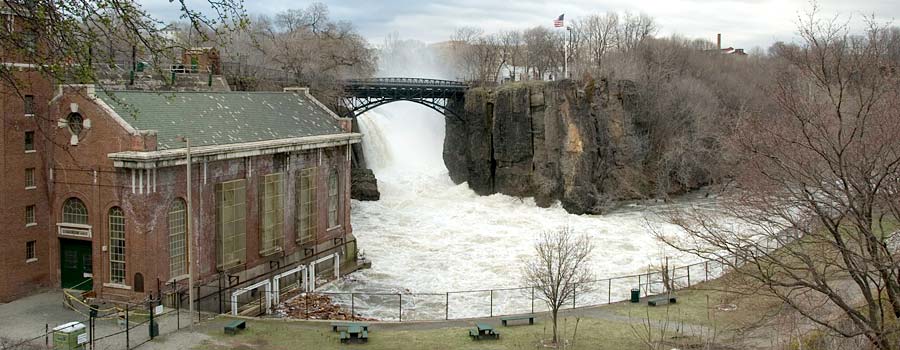
Great Swamp on Lake Passaic
07/03/2017
A Walk Through History: Lake Passaic and its Effects
Even though people often don’t think of New Jersey as nature oasis, if you scratch beneath the automobile industry and railroads you will find that this state has an impressive amount of parks and green surfaces. A genuine beauty of New Jersey lies in its natural wonders. It is not just about the beautiful green views and compelling environment but about activities that those offer as well. Plenty of those outdoor activities are possible due to the existence of the Lake Passaic. What is it? Why is it important and what it brought to New Jersey? Keep reading and find out!
Story of Lake Passaic
Many people don’t know about this prehistoric proglacial lake. It doesn’t surprise us since it existed at the end of the last ice age which means about 19,000- 14,000 years ago. Lake Passaic was
located in northern New Jersey, and it was formed of waters that came from the melting Wisconsin Glacier. For several hundred years the lake persisted on its place Meanwhile natural process’ drained the former lake basin through erosion and with the help of melting ice. With the lake in place, the Passaic River had to take an alternative route through the northern Watchung Mountains before the final spilling.
Today, the old Lake Passaic doesn’t exist in its original form, but in the place of the former lake basin, there is Passaic Meadows. It includes Black, Meadows, Troy Meadows, Little Piece Meadows, Hatfield Swamp, Glenhurst Meadows, Bog and Vly Meadows and the Great Swamp. These creations provide biological diversity and a habitat for various plants and animals. Meanwhile, they contribute to the residents of New Jersey by offering outdoor recreational opportunities.
Discovery of the Lake Passaic
The existence of Lake Passaic was hidden to the world until Professor George Hammell Cook didn’t bring it to attention. He first spoke about the lake in the New Jersey Annual Report of the State Geologist for the Year 1880. He described the area as flat-topped hills that appeared to be created by the water of a lake. State geologist John Smock began the actual discovery of the lake by uncovering traces that were a guarantee of the lake’s existence. It was not until 1893 when, finally, geologists Rollin Salisbury and Henry B. Kummel confirmed the existence of the ancient lake. They published the entire wave-cut terraces and delta deposits study in a report called Lake Passaic – An Extinct Glacial Lake, which was a part of the New Jersey Annual Report of the State Geologist for the Year 1893.
Precious Remnants of the Lake
The remains of the extinct glacial Lake Passaic was found in swamps across northern Jersey. Most important and prominent swamp where the influence of the Lake Passaic is proven is the notable Great Swamp. It lies in the south of Morris County and is famous for the Great Swamp National Wildlife Refuge.
The Great Swamp National Wildlife Refuge
The Great Swamp National Wildlife Refuge was created and established in 1960 as a project of the National Wildlife Refuge System that established another 550 refuges. In May 1966 the refuge got a prestigious title of being a National Natural Landmark. It was the first wilderness area within the Department of the Interior.
This vibrant area is a feeding hub and migration-resting location for over 244 species of birds. Birds who migrate through the eastern part of the US follow the route that includes the Great Swamp as a central resting and feeding place.
For many species of birds, the Great Swamp is their permanent habitat. But birds aren’t the only species of animals that live here. Raccoons, snakes, turtles, deer, fish and countless insects all contribute to restoring biodiversity by residing in this protected area. The Great Swamp has a significant role in improving the quality of water by acting as a natural filtrating system.
New Jersey may be an urban, modern and industrial state that develops both economically and culturally each day, however, its foundations are in the natural wonders it hides. One of those is the ancient Lake Passaic with its remaining waters and the Great Swamp as one of the most ecologically worthy locations in the US. We at Fortified Roofing, a local New Jersey roofing company are extremely happy to be surrounded by such a wildlife and natural beauties where ever we go.
